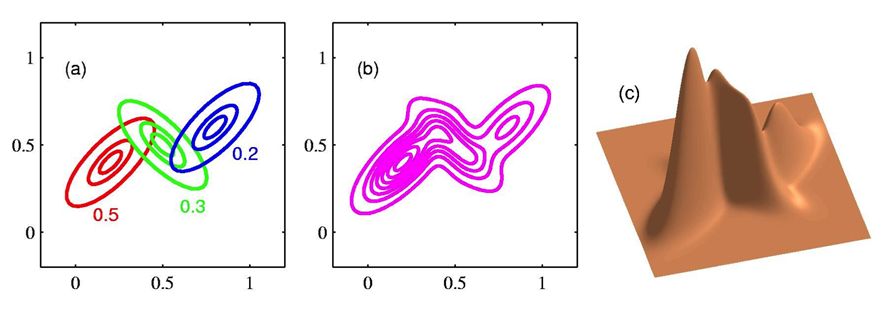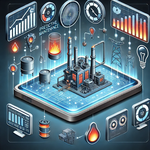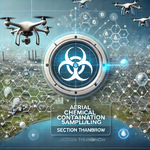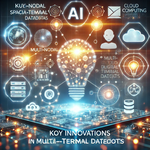 Multi-nodal, Multi-Variable, Spatiotemporal Datasets will remain a cornerstone of real-world data-intensive environments in 2025. Advances in data acquisition, processing, and analysis technologies have significantly enhanced our ability to extract actionable insights from these complex datasets. Today, these datasets are central to applications ranging from climate modeling and smart city infrastructure to industrial IoT and autonomous systems.
Multi-nodal, Multi-Variable, Spatiotemporal Datasets will remain a cornerstone of real-world data-intensive environments in 2025. Advances in data acquisition, processing, and analysis technologies have significantly enhanced our ability to extract actionable insights from these complex datasets. Today, these datasets are central to applications ranging from climate modeling and smart city infrastructure to industrial IoT and autonomous systems.

Example Dataset #1: Predictive Maintenance in Industrial Systems
 A classic example of a multi-nodal, multi-variable, spatio-temporal dataset involves heat distribution in a factory chimney. Modern implementations of this scenario have seen significant advancements:
A classic example of a multi-nodal, multi-variable, spatio-temporal dataset involves heat distribution in a factory chimney. Modern implementations of this scenario have seen significant advancements:
- Real-Time Predictive Analysis: Using advanced AI algorithms, sensor data is now continuously analyzed to detect anomalies. Cracks or failures are flagged in real-time, allowing for predictive maintenance before issues escalate.
- Edge Computing: Data is processed directly at the sensor level using edge devices, reducing latency and improving response times.
- Resilient Data Integration: When sensors fail, redundant data streams from adjacent sensors or simulated data using digital twins ensure continuous system monitoring without compromising accuracy.
These advancements have made industrial systems more efficient, cost-effective, and safer.
Example Dataset #2: Water Resource Management
 Another critical use case involves monitoring interconnected river and lake levels within a geographic area. In 2025, these systems have evolved to incorporate:
Another critical use case involves monitoring interconnected river and lake levels within a geographic area. In 2025, these systems have evolved to incorporate:
- IoT Networks: Connected sensors now provide granular, real-time measurements of water levels, flow rates, and even water quality parameters.
- Machine Learning Models: Advanced ML models predict flood risks, droughts, or contamination events based on historical and real-time data.
- Cloud Integration: Centralized cloud systems aggregate and process vast amounts of data from distributed sensors, offering environmental agencies and governments predictive insights.
Even when sensors go offline, redundancy algorithms and interpolated data models ensure that analytical systems remain robust and actionable.
Example Dataset #3: Dynamic Environmental Monitoring
 The most complex scenario involves aerial chemical contamination sampling, which is increasingly relevant in tackling environmental pollution and disaster response. In 2025:
The most complex scenario involves aerial chemical contamination sampling, which is increasingly relevant in tackling environmental pollution and disaster response. In 2025:
- Advanced Sensor Networks: Airborne devices like drones equipped with AI-powered chemical sensors now complement traditional sampling methods. These drones provide real-time, high-resolution data.
- Dynamic Data Integration: Combining data from mobile (truck-based), fixed (pole-mounted), and aerial systems, modern platforms use adaptive algorithms to fill in gaps caused by asynchronous or missing data streams.
- Predictive Weather Models: Improved atmospheric models powered by AI enhance our understanding of chemical dispersal, allowing for more accurate predictions of contamination spread.
The rise of heterogeneous sensor networks and context-aware data processing ensures that even sparse or incomplete datasets yield actionable insights.
Key Innovations in 2025
 The advances in handling multi-nodal, multi-variable, spatiotemporal datasets include:
The advances in handling multi-nodal, multi-variable, spatiotemporal datasets include:
- AI-Powered Processing: AI algorithms dynamically adapt to missing or inconsistent data, ensuring accuracy even in complex or volatile environments.
- Digital Twins: Virtual replicas of physical systems provide simulation and redundancy, filling gaps in data and enabling predictive insights.
- Distributed Data Architectures: Edge and cloud computing integration allow for decentralized processing while ensuring centralized data analytics.
- Scalable Data Frameworks: Technologies like graph databases and time-series databases now handle the inherent complexity of these datasets more efficiently than ever.
These innovations are driving breakthroughs across industries, making it possible to analyze and act on these datasets at an unprecedented scale and speed.
 Conclusion
Conclusion
In 2025, multi-nodal, multi-variable, spatiotemporal datasets will no longer be confined to theoretical examples—they will be integral to solving real-world challenges. From ensuring industrial safety to managing natural resources and mitigating environmental threats, these datasets will provide the foundation for actionable insights in an increasingly complex world.
Blog by Mark Reynolds, updated December 2024.
